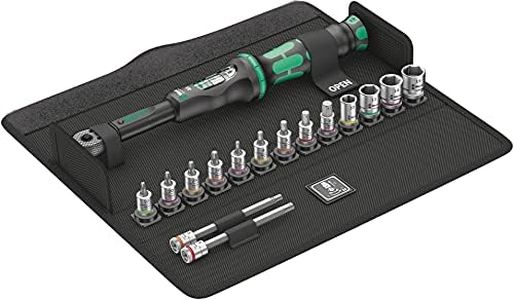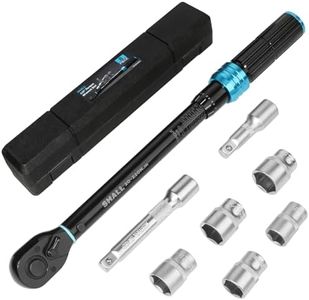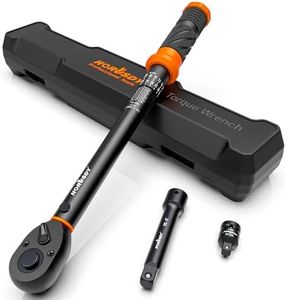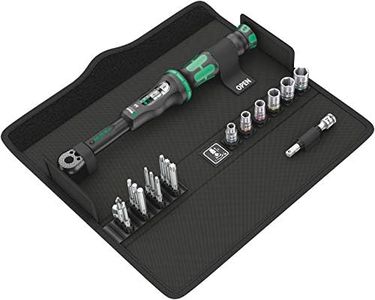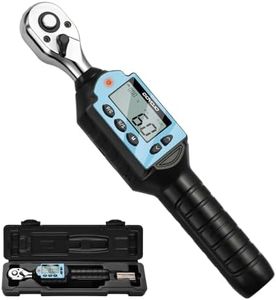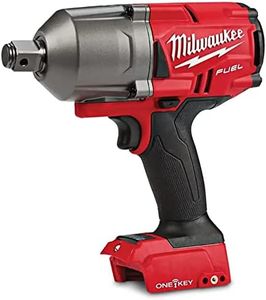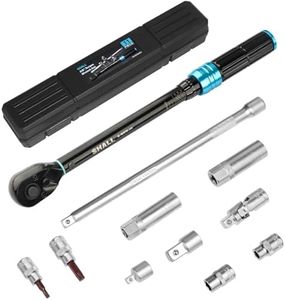We Use CookiesWe use cookies to enhance the security, performance,
functionality and for analytical and promotional activities. By continuing to browse this site you
are agreeing to our privacy policy
10 Best Torque Wrenches
From leading brands and best sellers available on the web.By clicking on a link to a third party's website, log data is shared with that third party.
Buying Guide for the Best Torque Wrenches
Choosing the right torque wrench is important for both safety and accuracy, especially when working on cars, bikes, machinery, or any equipment with precise bolt requirements. A torque wrench ensures you tighten bolts to the manufacturer's intended level, preventing damage from over-tightening or risks from under-tightening. When shopping for a torque wrench, there are several key specifications and features to consider that will help you select one that fits your specific needs and projects.Torque RangeThe torque range tells you the minimum and maximum force, usually measured in Newton-meters (Nm) or foot-pounds (ft-lb), that the wrench can apply. This spec is crucial because if you use a wrench outside its intended range, you risk inaccurate readings or damaging both the tool and the fastener. Light-duty tasks might only need a wrench with a low torque range, such as 5-30 Nm for bicycle work, while automotive or industrial applications may require something much higher, like 50-250 Nm or more. Match the torque range to the requirements of the tasks you'll be performing most often.
Drive SizeThe drive size refers to the size of the square fitting where you attach sockets, commonly available in 1/4-inch, 3/8-inch, 1/2-inch, and sometimes 3/4-inch sizes. Drive size generally matches the size of bolts or nuts you'll be working on. Smaller sizes (1/4-inch, 3/8-inch) are for lighter tasks, such as bike parts or engine components. Larger sizes (1/2-inch, 3/4-inch) are for bigger bolts, like those found on car wheels or heavy machinery. Choose a drive size that best suits your regular maintenance or repair work.
Type of Torque WrenchThere are several types of torque wrenches, including click, beam, and digital/electronic. Click wrenches make a clicking sound when the set torque is reached; they're reliable and straightforward. Beam wrenches show torque via a needle on a scale, offering simplicity and durability but require you to watch the scale carefully. Digital wrenches present torque values on a digital screen and may offer extra features like data storage but tend to be more expensive and require batteries. Choose a type that matches your comfort level and the level of precision you require.
Accuracy RatingAccuracy rating, typically shown as a percentage (such as ±4%), indicates how close the wrench's actual applied torque is to the set value. For general maintenance, a standard accuracy rating is adequate, but for sensitive or safety-critical work (like engine repairs or aerospace), a more precise rating may be needed. Think about whether your tasks demand precise torque application or if basic accuracy will suffice.
Build Material and ErgonomicsThe material affects the durability and comfort of the wrench. Hardened steel bodies and comfortable, non-slip handles are helpful for frequent or heavy use. Cheaper plastic or poorly designed handles may lead to discomfort or even reduced accuracy if your grip slips. If you plan to use it regularly or for demanding jobs, pick a model with robust construction and ergonomic features that fit comfortably in your hand.
Calibration and MaintenanceTorque wrenches need regular calibration to maintain accuracy, usually once a year or after a certain number of uses. See if the wrench comes with a calibration certificate, and consider if future recalibration services are accessible. For occasional home users, this is less critical, but for professionals or anyone working on safety-related equipment, timely calibration is essential.

